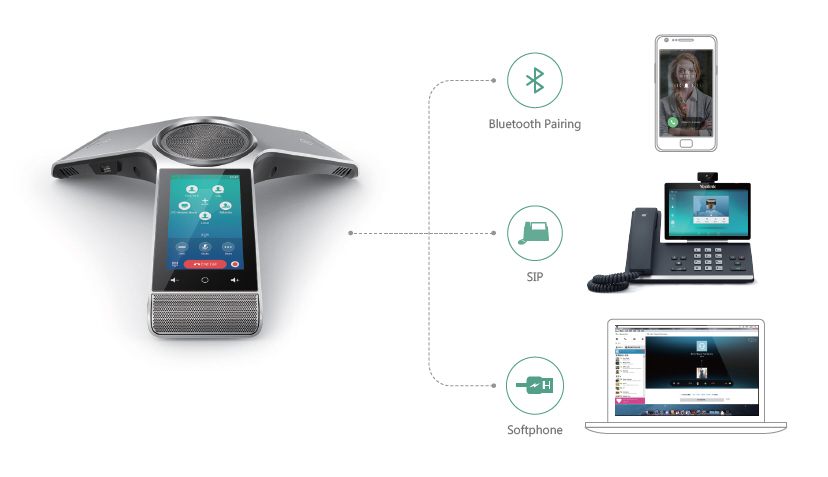Introduction: Embracing the Future of Communication
In today’s fast-paced business world, effective communication is not just a luxury; it’s an absolute necessity. As organizations strive to enhance their connectivity and collaboration efforts, many are turning to VoIP Phone Systems as a robust solution. Voice over Internet Protocol (VoIP) technology offers unparalleled flexibility, cost savings, and features that traditional telephone systems simply can’t match. However, implementing a VoIP system isn't without its challenges. In this article, we will delve into the common hurdles businesses face when adopting VoIP technology and how to overcome them.
What is a VoIP Phone System?
Understanding VoIP Technology
VoIP stands for Voice over Internet Protocol, which allows voice communication and multimedia sessions to be delivered over the Internet. Unlike traditional phone lines that rely on copper wires, VoIP uses digital signals converted into data packets. This groundbreaking technology enables users to make calls from anywhere with an internet connection.
Benefits of Choosing a VoIP Phone System
Cost Efficiency: One of the most attractive benefits of VoIP is its cost-saving potential. Scalability: Businesses can easily scale their communication solutions based on their growth. Feature-Rich Functionality: Most VoIP systems come loaded with features like call forwarding, voicemail-to-email, and video conferencing.Overcoming Common Challenges When Implementing a VoIP System in Your Business
Challenge 1: Poor Internet Connection Quality
A solid internet connection is the backbone of any VoIP deployment. Unfortunately, many businesses struggle with bandwidth issues that can result in dropped calls or poor audio quality.
Solution: Invest in High-Speed Internet
To ensure your VoIP system operates smoothly, invest in a high-speed internet connection with sufficient bandwidth to handle multiple calls simultaneously. Consider upgrading your network infrastructure if necessary.
Challenge 2: Employee Resistance to Change
Change is rarely welcomed with open arms in any organization. Employees may be resistant to adopting new technology due to familiarity with existing systems.
Solution: Provide Comprehensive Training
To ease this transition, invest time and resources into training employees on how to use the new system effectively. Offering hands-on workshops or online tutorials can significantly ease apprehensions about using VoIP technology.
Challenge 3: Security Concerns
With data breaches on the rise, many businesses worry about the security risks associated with using VoIP systems.
Solution: Implement Robust Security Measures
To safeguard sensitive communications:
- Use encryption for voice data Regularly update software Employ firewalls and intrusion detection systems
These measures help protect your business from potential threats associated with using a VoIP phone system.
Challenge 4: Integration Issues with Existing Systems
Integrating new technology with legacy systems can present significant challenges for many organizations.
Solution: Choose Compatible Solutions
Before selecting a VoIP provider, ensure that their services are compatible with your existing software and hardware solutions. Look for providers that offer integration capabilities or APIs for seamless connectivity.

Planning for Successful Implementation of a VoIP System
Step 1: Assess Your Current Infrastructure
Before jumping headfirst into implementation, assess your current infrastructure to identify areas requiring upgrades or changes.
Step 2: Define Your Requirements
Clearly outline what features you need from your new system—be it call routing capabilities or advanced analytics tools—to ensure you choose the right provider.
FAQs About Overcoming Common Challenges When Implementing a VoIP System in Your Business
FAQ 1: What are the main benefits of switching to a VoIP phone system?
The primary benefits include cost savings on call charges, increased mobility through remote access capabilities, and advanced features such as voicemail-to-email integration.

FAQ 2: Can I use my existing phones with a new VoIP system?
Yes! Many modern VoIP solutions allow you to use existing phones through adapters or by providing IP phones compatible with their service.
FAQ 3: What internet speed do I need for optimal performance?
Typically, you'll want at least 100 kbps per call for reliable performance; however, higher speeds are recommended if multiple simultaneous calls occur regularly.
FAQ 4: How do I secure my VoIP communications?
Utilize strong passwords, encryption methods for voice data transmission, and keep your software up-to-date to minimize vulnerabilities.
FAQ 5: Will switching affect my customer service?
If implemented correctly—with thorough training and preparation—a switch can enhance customer service through improved communication tools and responsiveness.
FAQ 6: What should I look for when choosing a provider?
Seek out providers who offer excellent customer service support options along with scalable plans tailored specifically for your business needs.
Conclusion
Implementing a VoIP Phone System in any organization comes with its own set of challenges; however, understanding these obstacles beforehand can significantly smoothen the transition process. By investing in proper infrastructure, ensuring employee buy-in through training sessions, securing communications against cyber threats, integrating seamlessly with existing technologies—all while focusing on scalability—you’re well on your way toward not only overcoming common challenges when implementing a VoIP system but thriving as an organization in today’s competitive landscape.
This article has explored various aspects related to overcoming common challenges when implementing a voip system in your business while emphasizing the importance of careful planning and https://soundcurve.com/ execution throughout this journey towards modern communication solutions.
